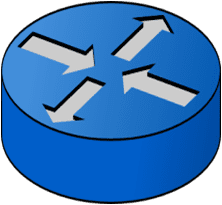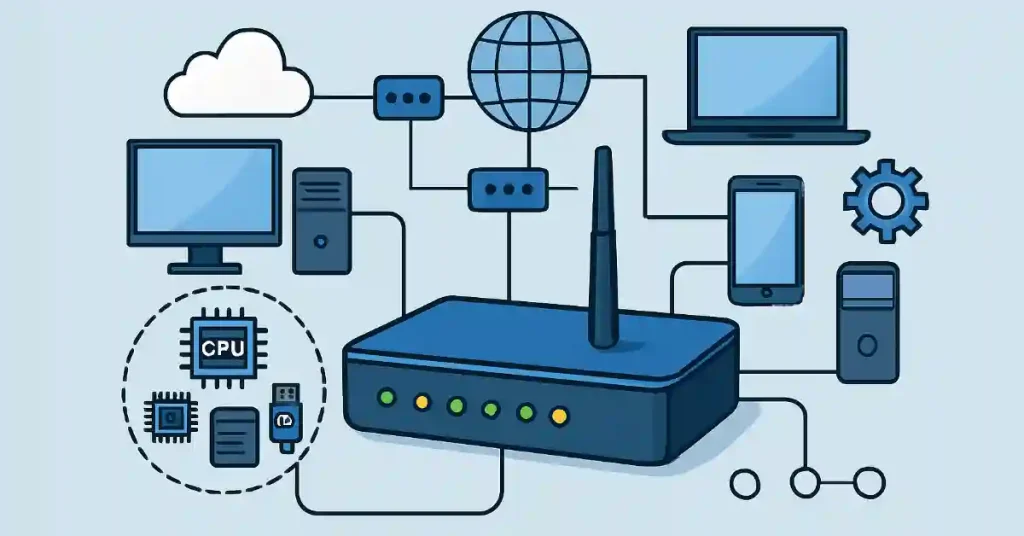The functions of the Router Briefly Explained
Routers are the cornerstone of modern networking, enabling seamless communication between devices across local and global networks. For CCNA and CCNP students, understanding the functions of the router is essential for mastering network fundamentals, configuring Cisco devices, and passing certification exams. A router connects multiple networks, determines the best path for data packets, and ensures efficient delivery to their destination, whether in a local area network (LAN) or across a wide area network (WAN).
This article delves into the functions, components, and operations of routers, providing practical insights for Cisco certification candidates. From routing tables to troubleshooting commands, we’ll cover everything you need to know to excel in your CCNA and CCNP studies.
The primary function of the router is to determine the best path to the destination and forward traffic to the next router along that path.
When a packet arrives on a router, the router uses a routing table to decide the best path for the destination network. The destination may be in the local area network or another country. The router is responsible for delivering this packet.

The effectiveness of communications between networks depends on the ability of routers to send packets in the most efficient way possible. The router does not have video and sound adapters like the computer. It has particular ports and network interface cards to interconnect devices to other networks. The essential parts of the router are the following:
- The central processing unit (CPU)
- Memory and storage (RAM, ROM, NVRAM, Flash, hard drive)
- Operating system (OS)
A router is a unique computer that uses a CPU to execute operating system instructions, such as system initialization, routing, and switching functions.
It also has a memory to store data temporarily and permanently. Cisco devices use the Cisco Internetwork Operating System (IOS) as the software. I already explained the router memory in one of my earlier articles:
Router Components Overview
Routers, like specialized computers, rely on specific hardware and software components to perform their functions. Below is a summary of the key components of a router, critical for CCNA and CCNP students.
| Component | Description |
|---|---|
| CPU | Executes instructions from the operating system for routing and switching. |
| RAM | Stores running configuration, routing tables, and packet buffers temporarily. |
| ROM | Contains bootstrap and POST (Power-On Self-Test) programs. |
| NVRAM | Stores the startup configuration file, preserved across reboots. |
| Flash | Holds the Cisco IOS image and other files, such as backup configurations. |
| Interfaces | Physical ports (e.g., Ethernet, Serial) for connecting to networks. |
| OS (Cisco IOS) | Software that manages routing, switching, and other router functions. |
Note: Understanding these components is crucial for configuring and troubleshooting Cisco routers in CCNA and CCNP labs.
Functions of a router in a network
| Function | Description |
|---|---|
| Packet Forwarding | Routers forward data packets between different networks, determining the best path based on routing tables. |
| Network Layer Routing | Routers connect multiple networks, enabling communication between devices on different networks. |
| Interconnect Networks | Routers support VPN connections, allowing remote users to access the network over the internet securely. |
| Traffic Control | Routers manage network traffic by prioritizing packets, implementing Quality of Service (QoS), and controlling bandwidth usage. |
| Security | Routers provide security features such as access control lists (ACLs), firewalls, and virtual private network (VPN) support to protect networks from unauthorized access and attacks. |
| NAT (Network Address Translation) | Routers perform NAT to translate private IP addresses to public IP addresses, allowing devices on a private network to access the internet. |
| DHCP (Dynamic Host Configuration Protocol) | Routers can act as DHCP servers, dynamically assigning IP addresses and other network configuration parameters to devices on a network. |
| VPN (Virtual Private Network) | Routers support VPN connections, allowing remote users to access the network over the Internet securely. |
| Load Balancing | Routers distribute network traffic across multiple links or paths to optimize performance and prevent congestion. |
| Redundancy | Routers support redundancy protocols such as HSRP (Hot Standby Router Protocol) and VRRP (Virtual Router Redundancy Protocol) to ensure high availability and fault tolerance. |
Conclusion – The Functions of the Router
Routers are the backbone of modern networking, enabling seamless communication across LANs and WANs by intelligently forwarding packets using routing tables. For CCNA and CCNP students, mastering router functions—such as packet forwarding, routing protocols, and security features—is critical for passing Cisco certification exams and building robust enterprise networks. By understanding router components like CPU, memory, and Cisco IOS, you’ll be well-equipped to configure and troubleshoot networks effectively. Dive deeper into Cisco technologies with NetworkUstad’s resources to ace your exams and excel in your networking career!
FAQs
A router forwards data packets between networks by selecting the best path based on its routing table, enabling communication between devices on different networks.
A router operates at the network layer (Layer 3) and connects different networks, while a switch operates at the data link layer (Layer 2) and connects devices within the same network.
A routing table contains destination networks, next-hop addresses, metrics, and interfaces. It’s critical for determining the best path for forwarding packets.
Key protocols include RIP, OSPF, EIGRP (Cisco proprietary), and BGP. CCNA focuses on RIP and OSPF, while CCNP includes EIGRP and BGP in depth.
Use Cisco IOS commands like ping, traceroute, show ip route, and show ip interface brief to diagnose connectivity, routing, or interface issues.
Cisco IOS is the operating system that manages router functions, including routing, switching, and security. It’s a core topic for CCNA and CCNP certifications.
